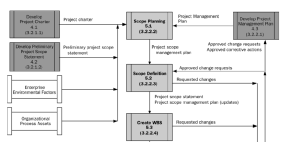
Cats and dogs, living together...
Greg Balestrero — CEO of the Project Management Institute — recently posted (here) on his experiences at the Scrum Gathering in Orlando. In my experience, Greg and the PMI staff have been very eager to foster a better relationship among the various methodology camps. Per Greg’s post,
[t]he intent of the visit was to bridge the gap between the Scrum Alliance and PMI. But I guess the real reason we attended was to dispel the myths that surround the PMBOK® Guide and Agile practice. There is a widely held opinion that the PMBOK® Guide and Agile don’t mix… they can’t be “shaken, nor stirred” together.
Please read the post…it gives an interesting perspective on how to build alliances among disparate points of view and how to overcome misconceptions.
Filed under: Methodology, PMO, Portfolio Management, Program Management, Project Management | Tagged: agile, PMBOK Guide 4th Edition, PMI, Project Management Institute, SCRUM | 1 Comment »













